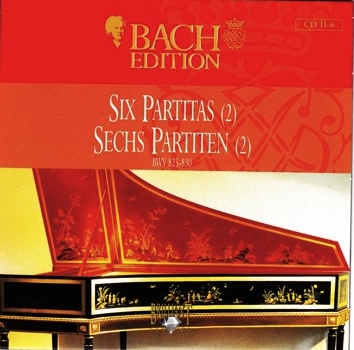 They say one should confront his/her fears so that they can be overcome and life can be lived with joy again.
They say one should confront his/her fears so that they can be overcome and life can be lived with joy again.
To that end, I’m reading about the harpsichord on Wikipedia, an excerpt from which tells me this:
The harpsichord was most probably invented in the late Middle Ages. By the 16th century, harpsichord makers in Italy were making lightweight instruments with low string tension. A different approach was taken in Flanders starting in the late 16th century, notably by the Ruckers family. Their harpsichords used a heavier construction and produced a more powerful and distinctive tone. They included the first harpsichords with two keyboards, used for transposition.
The Flemish instruments served as the model for 18th century harpsichord construction in other nations. In France, the double keyboards were adapted to control different choirs of strings, making a more musically flexible instrument. Instruments from the peak of the French tradition, by makers such as the Blanchet family and Pascal Taskin, are among the most widely admired of all harpsichords, and are frequently used as models for the construction of modern instruments. In England, the Kirkman and Shudi firms produced sophisticated harpsichords of great power and sonority. German builders extended the sound repertoire of the instrument by adding sixteen foot and two foot choirs; these instruments have recently served as models for modern builders.
In the late 18th century the harpsichord was supplanted by the piano and almost disappeared from view for most of the 19th century: an exception was its continued use in opera for accompanying recitative, but the piano sometimes displaced it even there. 20th century efforts to revive the harpsichord began with instruments that used piano technology, with heavy strings and metal frames.
Well, I learned something already. According to the liner notes on the CD jacket, the harpsichord used in the performance of this recording is a Flemish harpsichord after Ruckers.
I don’t believe my phobia regarding harpsichords has lessened any, though.
I also learned this from the Wikipedia article:
Perhaps the most celebrated composer who wrote for the harpsichord was J. S. Bach (1685-1750), whose solo works (for instance, the Well-Tempered Clavier and the Goldberg Variations), continue to be performed very widely, often on the piano. Bach was also a pioneer of the harpsichord concerto, both in works designated as such, and in the harpsichord part of his Fifth Brandenburg Concerto.
Two of the most prominent composers of the Classical period (music), Joseph Haydn (1732-1809) and Wolfgang Amadeus Mozart (1756-1791), wrote harpsichord music. For both, the instrument featured in the earlier period of their careers and was abandoned once they had shifted their efforts to the piano.
I’m sure the composition’s on today’s CD are fine examples of Bach’s prowess as a musician. But I’m having a hard time with the use of period instruments, seemingly for every composition so far. The issue at hand is this: Will I get anything out of this journey if I’m gritting my teeth the entire way? Or would I best serve Bach by abandoning the Brilliant Classics Complete Bach edition and seeking out a different complete set of Bach compositions, not performed on period instruments? That, by the way, is another thing I learned today; there are different Bach complete editions — mostly out of print, sadly — that offer performances using contemporary instruments. The debate that continues to swirl, and is entirely subjective, is related to my dilemma: period instruments for “authenticity”? Or contemporary instruments for a more accessible sound?
Ahh, Grasshopper. That is the question to ponder.
In the meantime, here are the compositions on today’s CD:
BWV 827
BWV 828
BWV 829
All of these were published in 1726. Bach was 41.

 You can call me Johann. But don't expect me to answer to that.
You can call me Johann. But don't expect me to answer to that.
No Comments so far ↓
There are no comments yet...Kick things off by filling out the form below.